Cluster 13
Crystalline Quantum Materials (QCM): Intersections Between Physics, Chemistry, and Materials Science
Instructors:
Aiming Yan, PhD
UCSC Department of Physics
Ryan Baumbach, PhD
UCSC Department of Physics
Prerequisites: Chemistry, Pre-Calculus
Preferred: Physics, Calculus
Summary: During the 20th century, quantum mechanics opened a new understanding of metals, semiconductors, magnetism, superconductivity, and other electronic phenomena, which led to rapid advances in technology. At present, we again find ourselves amid a second quantum revolution where electrons are being trained to do new tricks: for example, in anomalous correlated electron magnets, unconventional superconductors, and materials with topologically protected electronic states. Crystalline materials of different dimensions are providing the platform for this research area, where challenges relating to their inherent complexity are at the forefront of research. In this COSMOS cluster, we will examine both the fundamental degrees of freedom that produce novel physics in quantum materials and the chemistry/materials science that tunes these properties. Through lectures, invited talks from experts, field trips, and in-class activities, we will bring together the critical elements of the field of New Materials Physics, and thereby develop a perspective on how to develop the next generation of materials for society.
All students in this cluster will be enrolled in the following courses:
- Thermodynamics and Statistical Mechanics in QCM
- Manipulating Low-dimensional QCM at the Atomic Scale
Thermodynamics and Statistical Mechanics in QCM
This course will focus on quantum materials and will introduce the fundamentals of their thermodynamic properties, both from the physics and chemistry perspectives. To do this, we will develop an understanding of the physics of large numbers of particles; whether they are atoms, electrons, or spins. Lectures will focus on basic thermodynamics concepts such as the fundamental meaning of temperature, entropy, and free energy; and will introduce principles of statistical mechanics to understand the microscopic underpinning of these fundamental quantities. Resulting insights will be applied to understand the behavior of crystalline lattices, magnetism, electrical conduction, heat conduction, superconductivity, and other emergent phases that appear in the solid state. Students will also learn how these same concepts are used in the design and synthesis of crystalline quantum materials. Field trips to state-of-the-art labs, hands-on experiments, and invited guest lectures from researchers in the field will provide students direct exposure to quantum materials research.
Manipulating Low-dimensional QCM at the Atomic Scale
Low-dimensional quantum materials are promising for next-generation electronics due to their emergent physical and chemical properties that originate from their reduced dimensions. The low-dimensional nature leads to a dominant surface-to-volume ratio, which enables an effective strategy to control the materials’ properties–manipulation of crystalline structure at the atomic scale. All things we see and touch in our daily life are composed of atoms that cannot be seen with our naked eyes. How the atoms are arranged in the “thing” (or “material”) dictates its macroscale physical properties. This course will first introduce the fundamentals of crystallography- the direct way to depict the order and symmetry in the arrangement of atoms in materials. Then this fundamental understanding of crystallography will be applied to a special and exciting category of materials- two-dimensional (2D) materials, where one dimension of the materials is limited to only one or a-few-atom thick. In the end, the lecture will focus on how the arrangement of atoms can be “seen” and manipulated via different state-of-the-art experimental tools. Field trips to labs or facility centers where these experimental tools are hosted will be arranged. During these field trips, students will have opportunities to observe in real time how the atoms are being “seen” with the help of the most advanced technology in the world.



